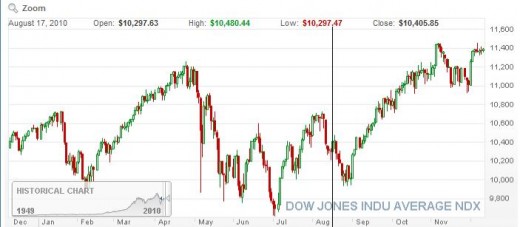Choosing an Investment Strategy: Avoid the Mania of the Day
Choosing an Investment Strategy
Imagine three stock brokers’ lunch time: The first gets an order to go from a burger place in his building and consumes it in front of his computer so as not to miss a market movement. The second heads out with two of his investor buddies to a nearby hotspot to rehash talk of an upcoming bank merger. A third prints out the latest annual statement from a company he is interested in and pours over it while having a leisurely lunch alone. All three are successful, but each has a different style of learning and approaching their financial moves. Which sounds most like you?
Whatever your financial goals: retirement, college-savings, the purchase of a home or just wealth preservation, you need to have an investment strategy. If you stumble through financial planning with only the vague objective to “make money”, you’re certain to fall victim to the most basic traps: panic selling, buying stocks near or at their peak and failing to diversify. A consistent investment philosophy with a clear idea of how your investments fit together will help guide you in making sounder decisions.
What is an Investment Strategy?
Any market theory or way of looking at the market could be called an investment strategy. Warren Buffet’s value investing or buy and hold strategy is one of the best known strategies, and he has clearly been extraordinarily successful, but it is not the most common strategy. Technical investors study price trends to predict future movements, contrarian investors seek out of favor stocks; others conduct analysis of the fundamentals of companies: their management, credit and competitiveness. Each of these strategies has strengths and weaknesses, but all share one benefit over directionless investing – their application tempers the emotion and impulsivity of financial decisions.

Which Investment Strategy is Right for Me?
Before you decide on an investment strategy, you should answer a few questions about yourself. Risk is an obvious component of investing, and you need to know your comfort level with risk. You must also understand that every investment decision entails some type of risk. “Safe” investments such as cash, treasuries, certificates of deposit or high grade bonds may return too little to keep up with inflation or earn a reasonable return. Recent bonds have been floated for one percent or less. Higher potential returns typically signal higher risk. How long could you be comfortable with stock that plummets shortly after you buy it? Would you be willing to wait out the conditions that pushed the price down or would you cut your losses? Warren Buffet counsels investors to never take a loss – wait until a stock turns around. Alternately, many believe that if a stock isn’t performing, you should reinvest into something that will.
A second consideration is how involved you are willing to be in your investments. The three imaginary stock brokers each spent their working lunches with a different style of engagement. You too should reflect on how you want to be involved in your investments. If you enjoy studying the market, analyzing trends and keeping up with the day to day swings, technical analysis may suit your disposition and interest. If you’d rather drop in and out periodically to look in on your investments, a buy and hold strategy may be more fitting.
Buying and Selling: Where the Rubber Meets the Road
The point of having an investment strategy is to have an anchor, a guiding framework to inform your buying and selling. Without a strategy, you are vulnerable to the mania of the day. When the market and your investments lose five percent in a week, the temptation to cut your losses is hard to resist. Your strategy should make explicit why you buy, and when you’re willing to sell. For instance, did you buy a particular stock for its dividend yield or did you expect its share price to appreciate? Perhaps you believe a stock will likely peak at 20% more than you purchased it and you wish to sell then, so you set up an automatic sell order at that point. These strategic decisions will keep you from impulsive buying and selling.
Whether you want to get involved in the fast-paced market movements or pour over financial statements to seek out the overlooked gem, the important point is a consistent clear plan. A blend of different styles is often wise, such as choosing stocks based on fundamentals, but timing purchases and sales using the techniques of technical analysis. However you choose to invest, consider your overall view of the market and consult professionals before making any drastic moves.









